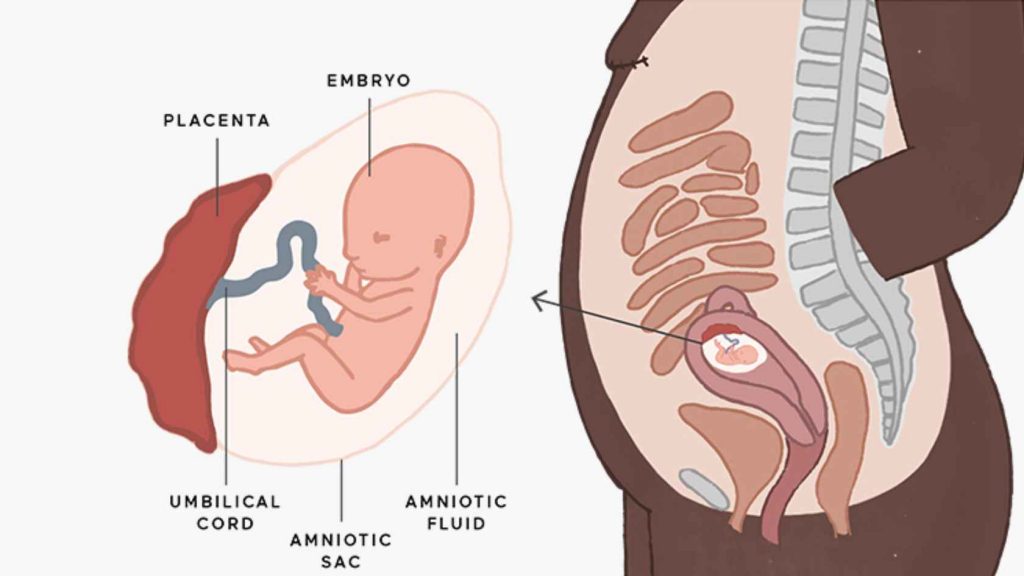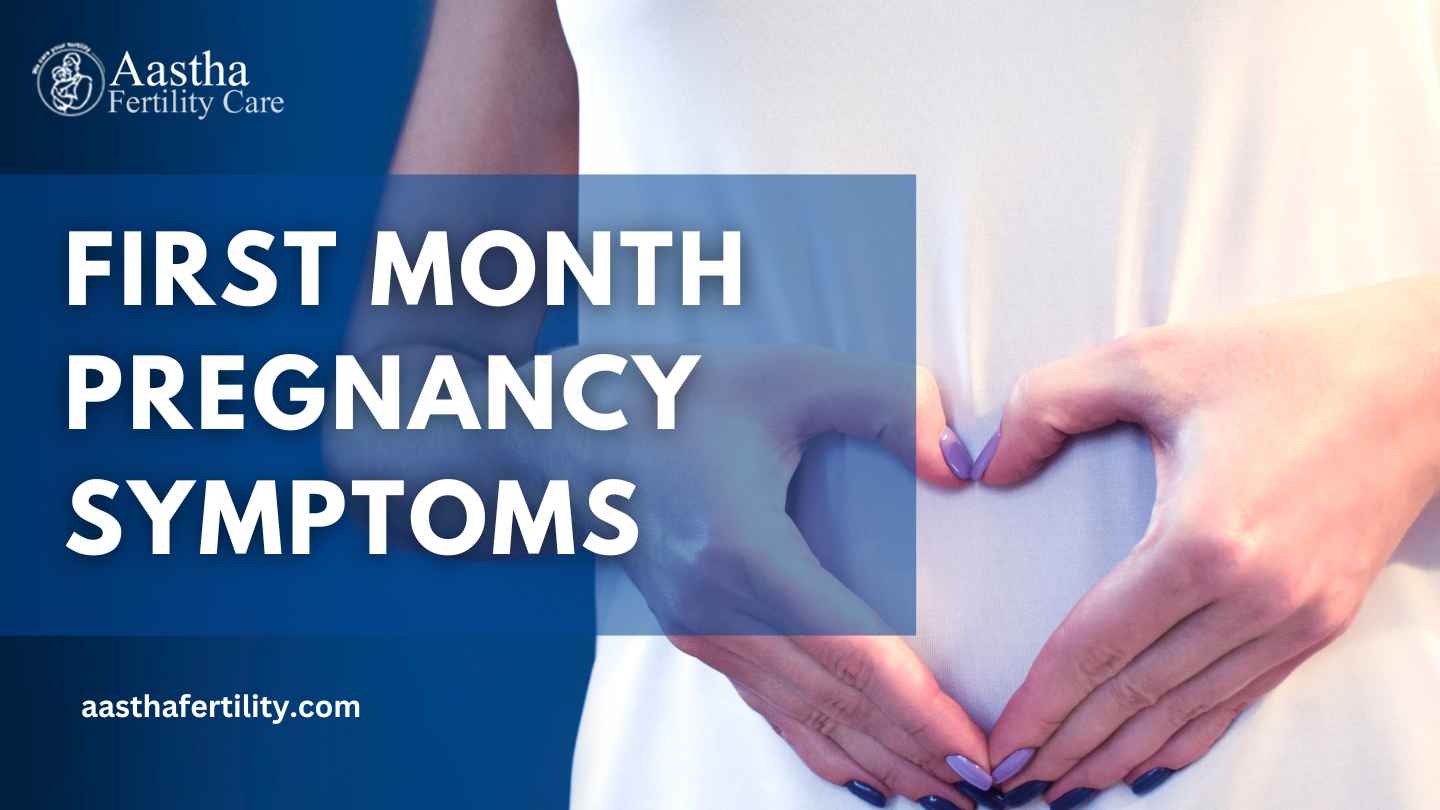Table of Contents
ToggleYou are in the fourth month of pregnancy if you are 13 weeks along. You’re at the end of the first trimester at 13 weeks pregnant. By 13 weeks, your baby bump may start to show, and your morning sickness may subside. Your unborn child may ingest and create urine at 13 weeks of pregnancy. Meanwhile, you can experience some new symptoms, like unwanted skin changes and more.
The infant has grown to be the size of a lemon, and his head is now roughly half the measurement of his body from crown to rump- the most beautiful feeling for a mother, though!
Wondering what the symptoms would be during the fourth month of pregnancy? Worry no more, as our 4-month pregnancy guide from Aastha Fertility experts has covered you.
Scroll down to explore how your body will enter the new phase of changes during the fourth month of pregnancy, and what precautions can help you with a stress-free experience.

Fetal Development Between 13-14 Weeks of Pregnancy
Week 13

When you are 13 weeks pregnant, you might experience the following things:
- Your infant is growing quickly, and all its organs are developed.
- Your infant is now able to bend their legs and arms.
- During 13 weeks, morning sickness and exhaustion associated with pregnancy may become less intense.
- During this time, you could see some colostrum dripping from your breasts. In the first few days following delivery, this viscous, yellow fluid is thought to be your baby’s first milk.
Week 14

Officially, you have started the second trimester. Many expectant mothers begin to feel more hungry, energized, and less queasy about 14 weeks pregnant as the early pregnancy discomfort starts to pass. You can see and feel your unborn child on an ultrasound. Your infant is gaining weight every day and may be beginning to grow hair.
When you are 14 weeks pregnant, you might experience the following things:
- At 14 weeks, your baby is roughly the size of a navel orange, rapidly growing and maturing. An Article published by WebMD, the baby in the second trimester of pregnancy is between 5 and 6 inches long and weighs about 4 ounces.
- Your infant is developing their ability to taste, smell, and move their arms and legs.
- Your infant is starting to take on the characteristics of the person you will meet after birth.
- You might feel more energized throughout this trimester and have thicker, healthier hair.
4th Month Pregnancy Symptoms

- Craving for food: You might be desiring food. You can indulge in your appetites in moderation but have a balanced diet during pregnancy.
- Abdomen discomfort: Lower abdomen pain is possible, and it may be either dull or acute. Changing positions can assist pregnant women who experience round ligament pain in reducing their discomfort.
- Sensitive gums and teeth: The hormones associated with pregnancy may increase your risk of developing gingivitis and make your gums more sensitive than ordinary.
- Varicose veins: Due to changes in circulation brought on by your increased blood volume during pregnancy, your face or legs may develop thin, reddish, or purple veins. After giving delivery, spider veins typically go away on their own.
- Stretch marks: As your skin stretches during pregnancy, you might notice stretch marks on your thighs, breasts, belly, or buttocks. To lessen discomfort and itching when pregnant, keep your skin hydrated.
- Nasal congestion: Your body’s increased blood volume and hormonal changes can make your nasal mucus membranes swell and bleed.
- Painful urination: Pregnant women are more likely to develop UTIs because the pressure from the expanding uterus makes it more challenging to empty the bladder. A UTI may occur if leftover urine has bacteria in it. If you notice painful urination, see your healthcare provider immediately because a UTI can develop into a more severe infection if left untreated.
- Unusual dreams: It’s common to have a stranger or more vivid dreams while pregnant, which you can attribute to hormone changes, altered sleep patterns, and stress.
Screenings and Tests in the 4th Month Pregnancy

Depending on any health risks or difficulties, you can undergo extra testing throughout your second trimester and routine examinations. Some tests are:
Ultrasound
A vital tool for assessing your unborn child while pregnant is an ultrasound. Both you and your child can use them without any risk.
To confirm pregnancy, many women get an ultrasound in the first trimester. Some women will hold off until the second trimester if they have a low chance of complications.
The menstrual cycle and the phase of your pregnancy might be confirmed or changed by a second-trimester ultrasound within 10 to 14 days. The placenta, the amniotic fluid, and the fetal anatomy can all be examined during a second-trimester ultrasound.
Triple Screen Test
Most people under 35 are given the option of a triple screen test during the second trimester. It is also called “AFP plus” or “multiple marker screening.” The mother’s blood is examined for three substances during the test: AFP, hCG, and estriol.
- Screening exams seek unusually high concentrations of certain drugs. Usually, the test is administered between weeks 15 and 22 of pregnancy. The ideal testing window is somewhere between 16 and 18 weeks.
- Prenatal anomalies, including trisomy 18 syndrome, Down syndrome, and spina bifida, can be found using triple-screen testing.
The abnormal triple-screen test results don’t always indicate a problem. Instead, additional testing is performed because it might suggest a risk. Doctors may suggest Amniocentesis or chorionic villus sampling if the risk is higher in specific cases. Although these tests are more accurate, they have a higher risk of problems than the triple screen test.
Cell-Free Fetal DNA Test
A cell-free fetal DNA test can determine the likelihood that your unborn child will have a chromosomal issue. This more recent test is often provided to women whose pregnancies are more likely to result in trisomy 13, 18, or 21.
This test is used for screening purposes only, not for diagnosis. In other words, if your CFF DNA test is positive, you’ll require a diagnostic test to determine a chromosomal issue in your child.
The placenta releases genetic material called cell-free fetal DNA. Your blood can be tested for it. It reveals your baby’s genetic composition and can identify chromosomal problems.
Amniocentesis
Amniocentesis, unlike the triple screen tests, can offer a conclusive diagnosis.
- The process known as Amniocentesis is regarded as intrusive. There is little chance of miscarriage. During this operation, your doctor will puncture your skin and the amniotic sac with a needle to collect a specimen of your amniotic fluid. Your amniotic fluid will be examined for any genetic and chromosomal anomalies in your unborn child.
- Whether you want to complete this test is up to you. Go for this test only when the advantages of the test results surpass the hazards of doing the test.
Amniocentesis might not be helpful for you if finding out that your child has Down syndrome will not affect how the pregnancy progresses.
One-Hour Glucose Tolerance Test
All pregnant women should have a 1-hour oral glucose tolerance test to check for gestational diabetes.
For this test, you’ll need to consume a sugar solution, typically comprising 50 grams of sugar. After an hour, your blood will be obtained to measure your blood sugar level.
- Your doctor will advise a 3-hour glucose tolerance test if your glucose test results are abnormal. This is comparable to the one-hour exam. After three hours, blood will be collected from you.
- Your body has a hard time balancing the quantity of sugar in your blood if you have gestational diabetes. For a healthy delivery, blood sugar regulation is crucial.
If you have gestational diabetes, you might need to take medication, adjust your eating and exercise routines, or both.
Additional Tests
Your doctor may order extra tests for the following, based on your obstetrical history and present health:
- Platelet count in the blood
- RPR is a fast plasma reagin test for syphilis,
- Bacterial vaginosis
- STIs
A blood sample is needed for some of these tests, while a urine sample is required for others. Your doctor might also need to swab your vagina, cheek, or cervix to check for infections.
Blood and platelet testing might spot immune system weaknesses or issues with blood clotting, which can make pregnancy and childbirth more difficult.
Baby Bump at 4 Months Pregnant

You will acquire weight at your rate. Run the numbers by your doctor if you’re unsure whether you’re gaining the right amount of weight or not; they’ll be able to give you a general idea of what constitutes a healthy amount of weight gain during the second trimester of pregnancy, given their knowledge of your medical records and your body size.
No matter how much weight you have or haven’t gained, your baby bump is probably starting to show. It can still be very little or nonexistent if you expect it for the first time.
Your child may be about five inches long and weigh close to five ounces by the end of this month.
Checklist for 4-Month pregnancy
Dos
- A growing infant requires a lot of nutrition, just like the mother does. Hence, it’s crucial to ensure you’re getting enough vitamin D.
- When pregnant, it’s crucial to keep up your regular schedule, practice yoga, and go for walks because mobility benefits labor and delivery.
- Your body is exerting itself for two people, so getting enough rest is essential.
- While your body gets ready for the next experience, it’s crucial to maintain your relationship’s intimacy. But first, talk to your doctor.
- To prevent becoming sick while you are pregnant, make sure to obtain a flu shot.
Don’ts
- You should not consume caffeine excessively because it can make your baby’s heart beat faster.
- If you have pets like cats, don’t clean the litter box because doing so puts you at risk of getting a parasite.
- Avoid sitting in a hot tub or sauna since the intense heat might lead to pregnancy issues.
- Avoid eating meat cooked outside to ensure it is cleaned and prepared correctly.
- Avoid drinking alcohol since it may cause fetal alcohol syndrome.
- Avoid smoking because it could lead to a baby having a low birth weight and a higher risk of impairments.
Sleeping Position
Avoid lying on your back, which can strain your muscles and spine from the weight of your uterus. But if you awaken on your back, don’t worry. Arrange pillows carefully to maximize comfort. Try putting a pillow beneath your belly or between your bent legs.
Sitting Position
Straighten your back, raise your shoulders, and sit up straight. Your buttocks should rest against the chair’s back. Place back support at the hollow of your back when you sit. Don’t twist at the waist while sitting on a chair that rolls and pivots. Turn your entire body instead.
Healthy Eating Habits
For pregnant women, folic acid, iron, and calcium are vital nutrients. Given that she is feeding two people, the mother shouldn’t be concerned about gaining weight so long as the meal is wholesome and nourishing.
It’s also crucial to consult your doctor and take necessary supplements, including vitamin D, to maintain your health. Food, including grains, fruits, and vegetables, usually is best when prepared at home to maintain hygiene.
You can also eat foods high in protein, such as fish and poultry. Each meal should contain all three components above to guarantee the best possible development of the fetus.
Conclusion
Being pregnant can be overwhelming, but when you enter your second trimester, you will get some relief from your morning sickness and bladder. Entering the fourth month of pregnancy also ensures successful pregnancy; you can now tell everyone.
Your baby can now move their hands and legs, and your baby bump starts showing. You can also diagnose whether your baby is healthy or have any genetic problem via different tests. Enjoy this semester of pregnancy, as it is the least troubling.
But make sure to have regular appointments with your doctor for a healthy delivery. Connect with specialists at Aastha Fertility Center to know more.
Frequently Asked Questions
1. Can a baby be felt at four months?
The fourth month of pregnancy is when you might feel the baby move for the first time.
2. What foods are healthy in the fourth month of pregnancy?
Pregnant women should consume fiber-rich foods, including whole grains, oats, and green vegetables. Typical sources of necessary fatty acids in food These acids will aid in lowering the risk of infant growth retardation, low birth weight, and early birth.
3. Will I be able to tell my baby’s gender at four months?
The sex can be established by ultrasound as early as 14 weeks. However, most doctors schedule them for 18 to 21 weeks. Yet it’s not always entirely correct.
4. Is the second trimester safest?
In general, if you are pregnant, assuming no issues arise, the best time for you to travel is during the second trimester.





Leave a comment